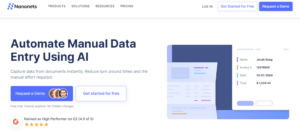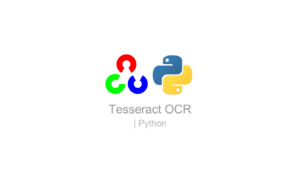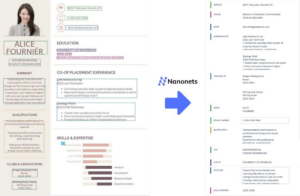
A survey by Accenture on underwriting employees found that up to 40% of underwriters’ time is spent on non-core and administrative activities. They estimate that this represents an industry-wide efficiency loss of up to $160 billion over the next five years.
Integrating AI and automation into the underwriting workflow presents a significant opportunity to minimize the time allocated to administrative tasks, manual processes, and repetitive data entries.
In addition, AI can help insurance firms evaluate risk with high accuracy by analyzing large volumes of data. What can be this data? Things like historical claims, credit scores, social media activity, and offer hyper-personalized coverage.
This is just the tip of the iceberg. Let's explore what are the top 6 benefits of AI insurance claims processing.
#1: Increased Accuracy and Reduced Errors
AI in insurance claims processing plays a pivotal role in enhancing accuracy and reducing errors by automating various tasks and mitigating the risks associated with manual processes. The integration of Optical Character Recognition (OCR) technology is particularly instrumental in automating the extraction of information from diverse documents, such as medical reports, accident statements, and policy details. This automation significantly diminishes reliance on manual data entry, a source of potential errors during transcription and input.
Another crucial aspect is the ability of AI algorithms to recognize patterns and validate information against predefined criteria. This ensures that the extracted data adheres to expected formats and standards, and that any deviations or discrepancies are promptly flagged for further review. The contextual understanding capabilities of advanced AI systems further contribute to accuracy by interpreting complex data relationships, reducing the likelihood of misinterpretation or misclassification.
Error correction and learning represent a dynamic feature of AI models, especially those incorporating machine learning. When errors occur, the system can adapt and improve over time through continuous learning, ultimately enhancing the accuracy of future data extractions. Moreover, AI in insurance claims processing can cross-verify information extracted from different documents, adding an extra layer of reliability to the processed data.
The integration of fraud detection algorithms is paramount for error reduction. These algorithms analyze patterns and anomalies in the data to identify potential instances of fraud or misrepresentation. By flagging suspicious claims early in the process, AI not only contributes to error reduction but also aids in preventing fraudulent activities, safeguarding the integrity of the claims processing system.
Real-time feedback and correction mechanisms are additional features that enhance accuracy throughout the claims processing journey. AI systems can provide immediate feedback when inconsistencies or errors are detected, prompting necessary corrections or requests for additional documentation. This proactive approach not only reduces the chances of errors persisting but also contributes to a smoother and more accurate claims adjudication process.
#2: Proactive Regulatory Compliance
AI plays a crucial role in ensuring regulatory compliance in insurance claims processing through the following:
- Automated Compliance Checks: AI algorithms can be programmed to conduct automated checks against regulatory requirements. By analyzing claims data in real-time, AI can ensure that each step of the claims processing workflow complies with the relevant regulations. This reduces the risk of unintentional non-compliance and helps insurers stay within the legal boundaries.
- Documentation Accuracy and Standardization: AI, especially when integrated with Optical Character Recognition (OCR) technology, ensures the accuracy and standardization of documentation. It can automatically extract information from documents, reducing the likelihood of manual errors. This is crucial for meeting regulatory standards that often require specific data formats and documentation accuracy.
- Real-time Monitoring and Reporting: AI systems can provide real-time monitoring of claims processing activities. This includes tracking changes in regulations and immediately flagging any discrepancies or potential non-compliance issues. Real-time reporting enables insurers to address compliance concerns promptly, minimizing the impact on operations.
- Audit Trail and Transparency: AI Insurance Claims Processing systems maintain detailed audit trails of all activities within the claims processing workflow. This transparency is essential for regulatory audits, allowing authorities to review the entire process and verify that each step adheres to compliance requirements. The audit trail acts as a comprehensive record, demonstrating due diligence in regulatory adherence.
- Adaptability to Regulatory Changes: Regulations in the insurance industry are subject to change. AI systems, particularly those incorporating machine learning, can adapt to new regulatory requirements by learning from updated datasets and adjusting their processes accordingly. This adaptability ensures that insurers can seamlessly incorporate changes without disrupting their operations.
- Data Privacy and Security Compliance: AI systems can enhance data privacy and security compliance by implementing robust encryption methods and access controls. Ensuring that sensitive information is handled and stored securely aligns with regulatory mandates, such as data protection laws. AI's ability to consistently enforce security measures helps prevent unauthorized access and data breaches.
- Risk Assessment and Compliance Prediction: AI can assist in proactively identifying potential compliance risks by analyzing historical data and patterns. By predicting areas where compliance may be challenging, insurers can take preemptive measures to adjust their processes and documentation, thereby reducing the risk of non-compliance issues.
#3: Improve tNPS with a Better Customer Experience
Given the highly customer-centric nature of the sector, insurance firms face heightened susceptibility to customer attrition. Adding to the complexity of customer service in the insurance domain, contemporary customers insist on instantaneous, 24/7 responsiveness, commonly described as the "touchless customer journey." This expectation comes with an exceptionally low tolerance for any shortcomings in service delivery.
Intelligent automation of routine tasks within the claims processing workflow is key. By automating data verification, status updates, and communication processes, insurers can reduce manual intervention and streamline operations. This not only speeds up claims processing but also enhances efficiency, contributing to improved tNPS as customers experience quicker and more seamless interactions throughout the claims journey.
AI-powered chatbots can enhance customer communication by providing instant assistance. Policyholders can receive real-time updates on claim status, coverage details, and documentation requirements. This immediate responsiveness improves customer satisfaction and contributes positively to tNPS.
In addition, AI employs predictive analytics to assess and analyze historical claims data. By identifying patterns and trends, insurers can make more informed decisions, speeding up the claims adjudication process. This proactive approach minimizes delays and contributes to faster claim resolutions.
#4: Enhanced Claims Volume Forecasting
AI holds the potential to significantly improve claims volume forecasting in the insurance industry. AI systems can meticulously analyze historical claims data through its sophisticated data analytics capabilities, identifying patterns and trends that serve as valuable indicators for future occurrences. This insight empowers insurers to make more accurate predictions, enhancing their ability to anticipate and prepare for fluctuations in claims volume.
Predictive modeling, a core strength of machine learning algorithms, further refines forecasting. By leveraging historical data alongside diverse influencing factors, these models give insurers a nuanced understanding of the variables impacting claims occurrences. This data-driven approach equips insurers with the tools to make informed decisions and optimize resource allocation based on precise forecasts.
Moreover, AI facilitates seamless integration of external data sources, enriching forecasting models with broader insights. This holistic approach considers factors beyond historical claims data, including weather forecasts, economic indicators, and social trends. The result is a more comprehensive and reliable forecasting model that captures the complexity of the external environment.
The adaptability of AI-powered forecasting models to changing conditions is a noteworthy advantage. As the insurance landscape evolves, these systems continuously learn from new data inputs, ensuring that predictions remain relevant and robust in the face of shifting market dynamics and emerging trends. This adaptability is crucial for maintaining the accuracy and efficacy of forecasting models over time.
#5: Replacing an Aging Workforce
AI emerges as a powerful solution for insurance firms seeking to future-proof their operations amidst challenges associated with an aging workforce. With experienced professionals retiring, AI aids in retaining and transferring institutional knowledge. Machine learning algorithms analyze historical data, documents, and communication patterns, creating a repository that seamlessly transfers knowledge to new employees.
Predictive workforce planning is a key strength of AI, leveraging predictive analytics to forecast future demand based on historical data and market trends. This allows insurance firms to align operational expenses, including staffing levels, with anticipated demand. Accurate predictions ensure optimal staffing levels, avoiding the pitfalls of overstaffing or understaffing.
AI-augmented decision-making becomes particularly crucial in the face of retirement. Equipped with machine learning algorithms, AI systems provide insights and predictions based on extensive datasets. This ensures that decision-makers have access to intelligent, data-driven guidance, even with a reduced workforce.
Training and skill development are facilitated by AI, which identifies skill gaps and recommends personalized learning paths for both existing and new employees. This ensures that the workforce remains adaptable and equipped with the necessary skills to meet evolving demands.
Lastly, AI's predictive capabilities extend to risk management. By analyzing historical data, AI systems identify potential risks associated with workforce changes and help insurance firms proactively manage these risks. This includes addressing areas lacking expertise and implementing strategies to mitigate potential challenges.
#6: Maintaining Data Integrity
AI is a critical asset in bolstering business continuity and safeguarding data in claims management. It proactively identifies potential threats through automated risk assessments, allowing for preventive measures.
In the realm of cybersecurity, AI tools detect and respond to threats in real-time, securing claims data from unauthorized access. Encryption techniques and access controls further enhance data protection. AI's proficiency in fraud detection and anomaly identification safeguards against financial losses and maintains the integrity of claims data.
Moreover, AI contributes to effective disaster recovery planning by monitoring data backups and facilitating swift recovery processes. Continuous monitoring of systems and data, coupled with real-time alerts for unusual activities, enables immediate response to potential threats. This comprehensive approach ensures insurers can navigate disruptions seamlessly while upholding the confidentiality and integrity of claims data.
How can Nanonets Help?
According to research conducted by EY, 87% of customers indicate that the efficiency of claims processing significantly impacts their decision to renew insurance with the same provider. The utilization of AI and machine learning algorithms can expedite the claims handling process seamlessly, minimizing the need for direct human intervention.
However, according to a Deloitte survey, although 32% of software and internet technology sectors have initiated investments in AI, a mere 1.33% of insurance companies have ventured into AI investments.
Take the first step into future-proofing your business with Nanonets. We can help by:
Automated Document Processing
Nanonets leverages AI and ML to automate document processing, including extracting relevant information from various documents such as invoices, medical reports, and claim forms. This reduces the need for manual data entry, minimizes errors, and significantly speeds up the claims processing workflow.
The advanced machine learning algorithms employed by Nanonets ensure high accuracy in extracting information from unstructured data. This accuracy enhances the reliability of data extraction, contributing to more precise claims assessments and reducing the likelihood of errors in processing.
Efficient Claims Classification
Nanonets utilizes AI to intelligently classify and categorize claims based on their content. This automated classification ensures that claims are directed to the appropriate channels, reducing the need for manual sorting and expediting the claims handling process.
Fast-Track Decision Making
With Nanonets' machine learning capabilities, insurers can implement predictive analytics to assess historical claims data swiftly. This facilitates data-driven decision-making, enabling faster approvals for legitimate claims and optimizing the overall claims adjudication process.
Fraud Detection and Risk Management:
Nanonets employs AI algorithms to detect anomalies and patterns indicative of potential fraud within claims data. This enhances fraud detection capabilities, enabling insurers to identify suspicious claims promptly and mitigate risks effectively, contributing to a more secure and streamlined claims processing environment.
Adaptability to Evolving Requirements
Nanonets' AI and ML capabilities provide scalability and adaptability to changing conditions in the insurance landscape. The system can continuously learn from new data inputs, ensuring it stays updated and relevant as industry requirements, regulations, and processing workflows evolve.
Enhanced Customer Experience
Through streamlined claims processing, Nanonets contributes to an improved customer experience. Faster claims assessments and approvals lead to quicker settlements, positively impacting customer satisfaction and loyalty.
- SEO Powered Content & PR Distribution. Get Amplified Today.
- PlatoData.Network Vertical Generative Ai. Empower Yourself. Access Here.
- PlatoAiStream. Web3 Intelligence. Knowledge Amplified. Access Here.
- PlatoESG. Carbon, CleanTech, Energy, Environment, Solar, Waste Management. Access Here.
- PlatoHealth. Biotech and Clinical Trials Intelligence. Access Here.
- Source: https://nanonets.com/blog/ai-insurance-claims-processing/
- :is
- :not
- :where
- $UP
- 1
- a
- ability
- Accenture
- access
- accident
- According
- accordingly
- accuracy
- accurate
- activities
- activity
- acts
- adapt
- adding
- addition
- Additional
- address
- addressing
- adherence
- adjust
- adjusting
- administrative
- advanced
- ADvantage
- against
- Aging
- AI
- AI in Insurance
- ai insurance
- ai investments
- AI models
- AI systems
- AI-powered
- aids
- alerts
- algorithms
- align
- Aligns
- All
- allocated
- allocation
- Allowing
- allows
- alongside
- also
- Although
- amidst
- an
- analytics
- analyze
- analyzing
- and
- anticipate
- Anticipated
- any
- approach
- appropriate
- approvals
- ARE
- areas
- AS
- aspect
- assess
- assessment
- assessments
- asset
- assist
- Assistance
- associated
- attrition
- audit
- audits
- Authorities
- automate
- Automated
- automatically
- automating
- Automation
- avoiding
- backups
- based
- BE
- becomes
- benefits
- Better
- Beyond
- Billion
- bolstering
- both
- boundaries
- breaches
- broader
- business
- business continuity
- but
- by
- CAN
- capabilities
- captures
- challenges
- challenging
- chances
- change
- Changes
- changing
- channels
- character
- character recognition
- chatbots
- Checks
- claim
- claims
- Claims Management
- classification
- Classify
- comes
- commonly
- Communication
- Companies
- complex
- complexity
- compliance
- comprehensive
- Concerns
- conditions
- Conduct
- conducted
- confidentiality
- considers
- consistently
- contemporary
- content
- contextual
- continuity
- continuous
- continuously
- contribute
- contributes
- contributing
- controls
- Core
- Corrections
- coupled
- coverage
- Creating
- credit
- criteria
- critical
- crucial
- customer
- customer experience
- Customer Journey
- Customer satisfaction
- Customer Service
- Customers
- Cybersecurity
- data
- Data Analytics
- Data Breaches
- data entry
- data privacy
- Data Privacy and Security
- data protection
- data-driven
- datasets
- decision
- Decision Making
- decision-makers
- decisions
- delays
- delivery
- deloitte
- Demand
- demands
- demonstrating
- described
- detailed
- details
- detect
- detected
- Detection
- Development
- different
- diligence
- direct
- directed
- disaster
- disruptions
- diverse
- document
- documentation
- documents
- domain
- due
- during
- dynamic
- dynamics
- each
- Early
- Economic
- economic indicators
- Effective
- effectively
- efficacy
- efficiency
- emerges
- emerging
- employed
- employees
- employs
- empowers
- enables
- enabling
- encryption
- enforce
- enhance
- enhanced
- Enhances
- enhancing
- enriching
- ensure
- ensures
- ensuring
- Entire
- entry
- Environment
- equipped
- error
- Errors
- especially
- essential
- estimate
- Ether (ETH)
- evaluate
- Even
- evolve
- evolves
- evolving
- exceptionally
- existing
- expectation
- expected
- expedite
- expenses
- experience
- experienced
- expertise
- explore
- extend
- extensive
- external
- extra
- extract
- extraction
- EY
- Face
- facilitated
- facilitates
- facilitating
- factors
- faster
- Feature
- Features
- feedback
- financial
- firms
- First
- five
- flagged
- fluctuations
- following
- For
- Forecast
- forecasts
- forms
- found
- fraud
- fraud detection
- fraudulent
- from
- further
- future
- gaps
- Give
- guidance
- Handling
- Have
- heightened
- help
- helps
- High
- highly
- historical
- holds
- holistic
- HTTPS
- human
- Identification
- identifies
- identify
- identifying
- immediate
- immediately
- Impact
- impacting
- Impacts
- implement
- implementing
- improve
- improved
- improves
- in
- includes
- Including
- inconsistencies
- incorporate
- incorporating
- increased
- indicate
- indicative
- Indicators
- industry
- influencing
- information
- informed
- initiated
- input
- inputs
- insight
- insights
- instances
- instant
- Institutional
- instrumental
- insurance
- insurance industry
- insurers
- integrated
- integration
- integrity
- Intelligent
- interactions
- Internet
- intervention
- into
- Investments
- invoices
- issues
- IT
- ITS
- journey
- just
- Key
- knowledge
- lacking
- landscape
- large
- Laws
- layer
- lead
- LEARN
- learning
- Legal
- legitimate
- let
- levels
- leverages
- leveraging
- like
- likelihood
- loss
- losses
- Low
- Loyalty
- machine
- machine learning
- maintain
- maintaining
- maintains
- make
- manage
- management
- mandates
- manual
- Market
- Market Trends
- May..
- measures
- mechanisms
- Media
- medical
- Meet
- meeting
- mere
- methods
- meticulously
- minimize
- minimizes
- minimizing
- Mitigate
- mitigating
- ML
- model
- modeling
- models
- monitoring
- more
- Moreover
- Nature
- Navigate
- necessary
- Need
- New
- next
- noteworthy
- occur
- OCR
- of
- offer
- often
- on
- only
- operational
- Operations
- Opportunity
- optical character recognition
- optimal
- Optimize
- optimizing
- or
- over
- overall
- Paramount
- particularly
- paths
- patterns
- Personalized
- pivotal
- planning
- plato
- Plato Data Intelligence
- PlatoData
- plays
- policy
- positively
- potential
- powerful
- precise
- predicting
- prediction
- Predictions
- predictive
- Predictive Analytics
- Prepare
- presents
- prevent
- preventing
- privacy
- Privacy and Security
- Proactive
- process
- processed
- processes
- processing
- professionals
- programmed
- protection
- provide
- provider
- providing
- quicker
- real-time
- realm
- receive
- recognition
- recognize
- recommends
- record
- recovery
- reduce
- Reduced
- reduces
- reducing
- reduction
- regulations
- regulatory
- Regulatory Compliance
- Relationships
- relevant
- reliability
- reliable
- reliance
- remain
- remains
- repetitive
- Reporting
- Reports
- repository
- represent
- represents
- requests
- require
- Requirements
- resource
- Respond
- response
- result
- retaining
- retirement
- review
- Risk
- risk management
- risks
- robust
- Role
- routine
- s
- safeguarding
- safeguards
- same
- satisfaction
- Scalability
- scores
- seamless
- seamlessly
- sector
- Sectors
- secure
- securely
- securing
- security
- Security Measures
- seeking
- sensitive
- serve
- service
- Settlements
- SHIFTING
- shortcomings
- significant
- significantly
- skill
- skills
- smoother
- Social
- social media
- Social trends
- Software
- solution
- sophisticated
- Source
- Sources
- specific
- speeds
- spent
- staffing
- standardization
- standards
- statements
- Status
- stay
- Step
- stored
- strategies
- streamline
- streamlined
- strength
- subject
- such
- susceptibility
- suspicious
- SWIFT
- swiftly
- system
- Systems
- Take
- tasks
- techniques
- Technology
- that
- The
- their
- thereby
- These
- they
- things
- this
- those
- threats
- Through
- throughout
- time
- tip
- to
- tolerance
- tools
- top
- touchless
- Tracking
- trail
- Transferring
- transfers
- Transparency
- Trends
- Ultimately
- unauthorized
- understanding
- underwriting
- unusual
- updated
- Updates
- upholding
- utilizes
- VALIDATE
- Valuable
- various
- Verification
- verify
- volume
- volumes
- we
- Weather
- What
- when
- which
- while
- with
- within
- without
- workflow
- workflows
- Workforce
- years
- Your
- zephyrnet









